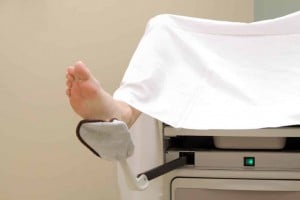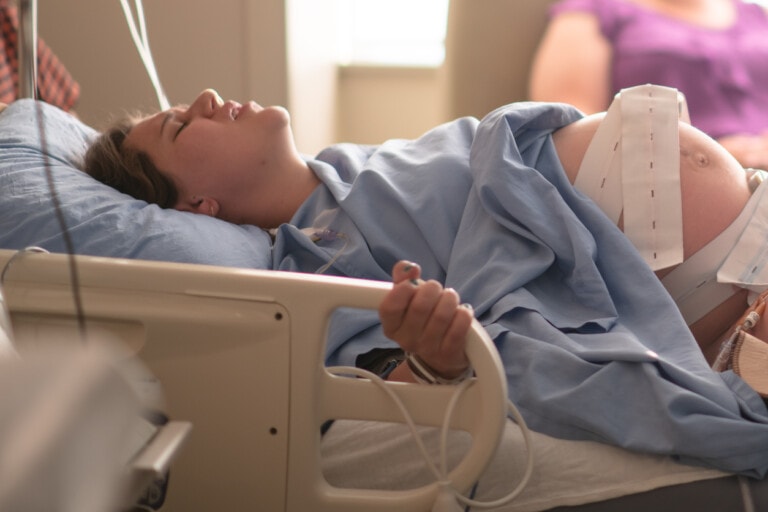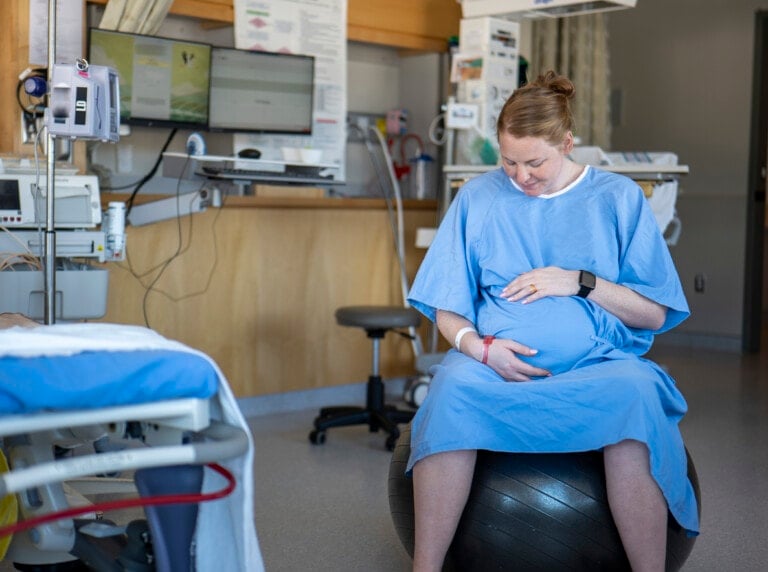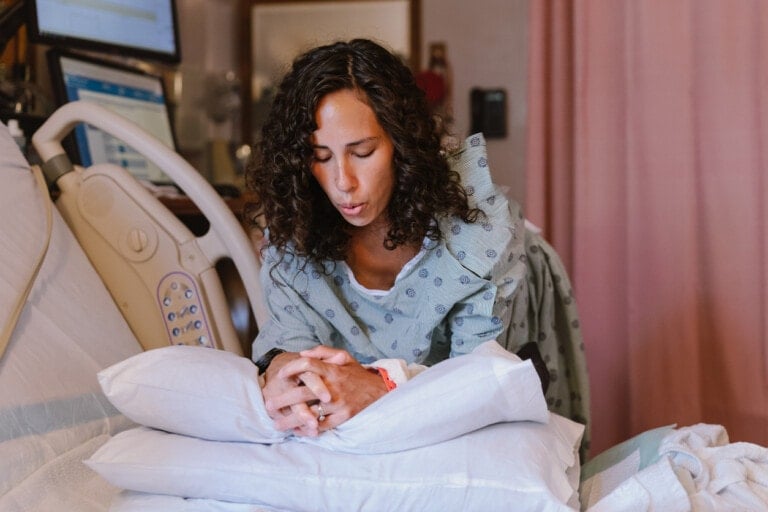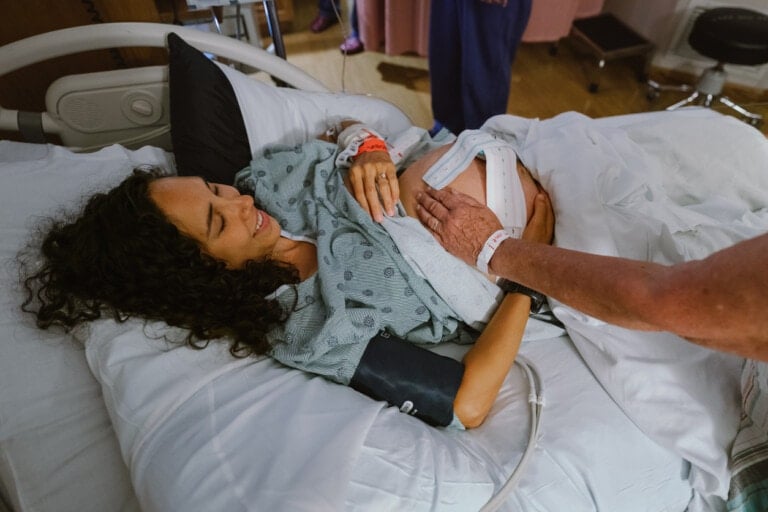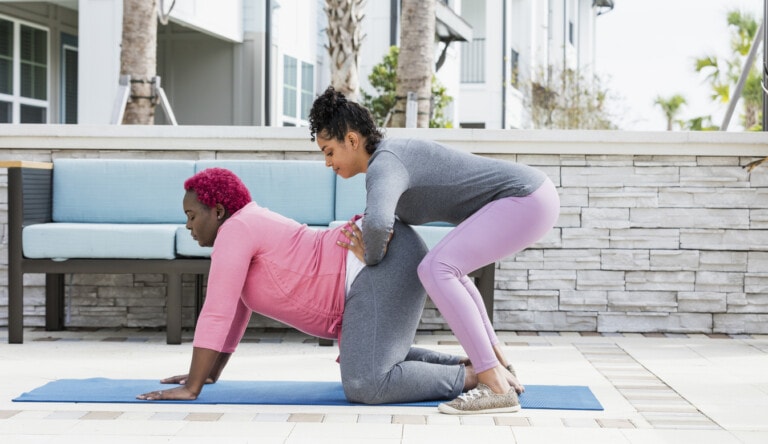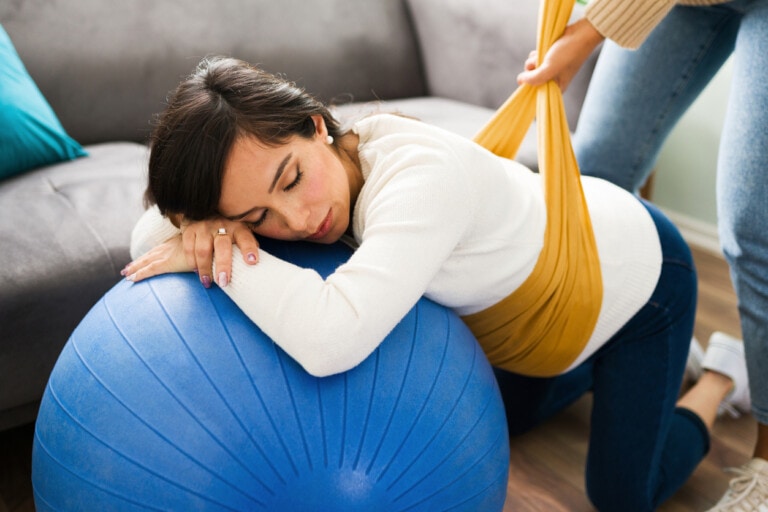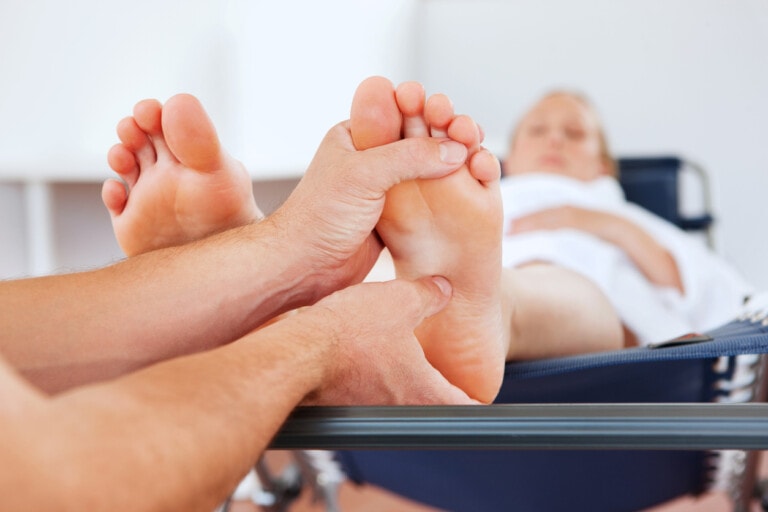Now that we have gone over what to do in early labor, you may wonder what’s next. “How will I know once I’m in active labor?” and “What do I do once I’m there?” are great questions many women have. I’m breaking it down to help you know what to expect and what options are available. This will allow you to make the best choices for yourself and your baby!
What Is Active Labor?
Active labor is when your cervix has dilated to 6 centimeters, and your contractions last for 45 to 60 seconds long, are three to five minutes apart, and are in a consistent pattern for at least an hour.1,4 You will notice a difference when entering active labor because your contractions will get stronger.1 They will require more focus and attention. When you’re in active labor, there will be no denying you’re in labor!
When your contractions are at 5-1-1, you are entering into active labor and are no longer in early labor. 5-1-1 means your contractions are at least five minutes apart, each contraction is one minute long, and this has been consistent for at least one hour straight.5
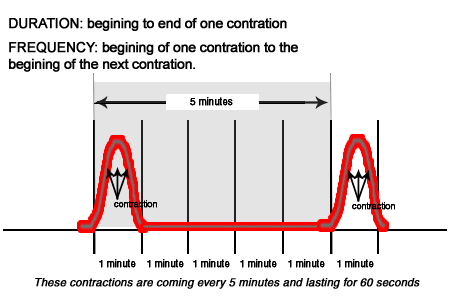
5-1-1 is usually when doctors tell you to go to the hospital for labor.5 However, from my experience (after going to hundreds of births), it’s a much better idea to stay at home until things have picked up. Why? Staying at home until reaching at least 4-1-1 (or, even better, 3-1-1) reduces your chances of having more interventions, including a C-section.3 At home, you can eat and drink whatever you please. You also aren’t limited to one room and don’t have to be monitored the whole time. So when you talk to your doctor or your midwife, they want you to be at least 5-1-1 before you come in.5 If you are not quite at that point, they will send you home because you are still in early labor.
What Does Active Labor Feel Like?
In early labor, things shouldn’t be that intense. You can walk and talk through your contractions as cramp-like sensations slowly build. Active labor is when you recognize a pattern with your contractions. They aren’t going away and are becoming more intense as time passes. They usually begin with a dull, low pain that builds and gets stronger.1 It’s like a wave; it rises and gets more difficult until it reaches its peak, then falls and fades away.
Many women say they feel contractions starting in their lower abdomen in active labor. This can feel like menstrual cramps or gas pain. Then, the contraction builds and wraps around their belly to their lower back. Some women feel the start of their contractions in their lower back and ache in their pelvis and legs.7
Everyone is different, but some of this can be attributed to your baby’s position. If you feel all your contractions in your lower back (“back labor“), it likely means your baby is facing OP (occiput posterior). OP is when the back of your baby’s head (the occiput) presses firmly against your pelvis/sacrum. Ouch! When bone and bone are hitting each other, it can cause significant pain, and that’s what back labor is.8 This is why positioning and changing your positions are essential during labor.1 You can help your baby be in the OA position (occiput anterior) for easier labor and delivery.9
How Long Does Active Labor Last?
If I could tell women how long their labors would last, I would be a billionaire! Unfortunately, there isn’t a magic number since every woman labors differently. But I can tell you this: on average active labor lasts four to eight hours.1 Remember, this is not including early labor, transition labor, or pushing. But we have seen cases where women in active labor go as fast as 30 minutes while others go up to 10 hours or more.
Physicians’ expectation for progress during active labor is typically 1 cm dilation per hour).1 Some women can achieve this goal, and others need more time. If you have gone to the hospital too soon and are not dilating at least half that rate, your doctor may prescribe Pitocin.
If this is your second, third, or fourth child, your active labor phase will likely be much faster than your first labor.1 Subsequent labors and births can be half the time.10 However, if you’re going to be induced and take Pitocin, this phase may go even faster.11 But things can be much slower if you’ve decided to get an epidural.1 Having them both causes each woman to react differently, so it could be fast or slow or cause your labor to refuse to progress.12
6 Tips on What To Do During Active Labor
Now that you know what to expect from active labor, here are some tips to help you get through to the next phase!
1. Change Positions and Move
Things have now picked up, so it’s time to get moving! Now that you are in active labor, your contractions are stronger and more effective.1 The more you move, the faster things go. Changing positions in active labor at least every hour, preferably 30 minutes, is ideal. This helps the baby descend, putting more pressure on your cervix to help it open/dilate.13
Go for a walk, climb the stairs, and sway your hips from side to side to help open your pelvis. Or, even better, do some squats or side lunges to get the baby lower.13 There are tons of positions you can do! Don’t over-tire yourself since you still have the transition phase and pushing stage. If you’re not sure what positions to try, here is an excellent graphic that includes several options:
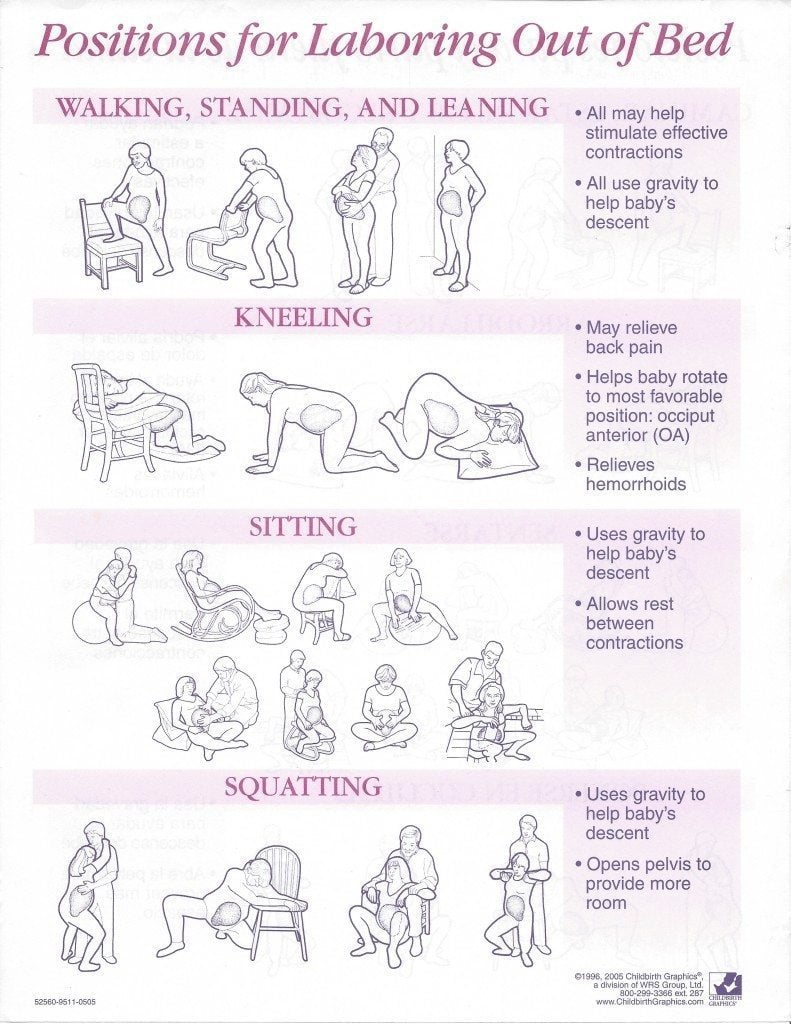
Once you have gotten to the hospital or birthing center (hopefully at 4-1-1 or 3-1-1), continue changing positions. They help ease labor pain and speed up the process.13 Even though you’ll need to be monitored, you should still be able to move to help your labor progress.
You can choose to get an epidural or other pain medication during active labor. If you decide to get an epidural or other pain medication, it is still crucial for you to move.13 You won’t be able to get out of bed, but changing positions every half hour or so from your left side to your right side to sitting up in bed is necessary. It is essential to continue helping the baby rotate and move down into your pelvis. Movement is the best way to achieve this. Laying in one position for too long can cause things to stall and “failure to progress.”14
2. Stay Nourished and Hydrated
As I noted in “What To Do in Early Labor,” staying nourished and hydrated in active labor is important. You need that fuel to keep going. If you are still at home, you will have access to all your snacks (have these snacks ready for your labor and delivery) and beverages that keep you feeling good and strong (see labor-aide recipe). You can continue to eat and drink at the birthing center since it’s been proven that women should continue to eat and drink lightly during labor.2 But in the hospital, more than likely, you will be restricted and only allowed to eat ice chips. If you’re lucky, they will get you a sugar-free popsicle. Another reason to stay home as long as possible is so you can continue to have fuel for energy.
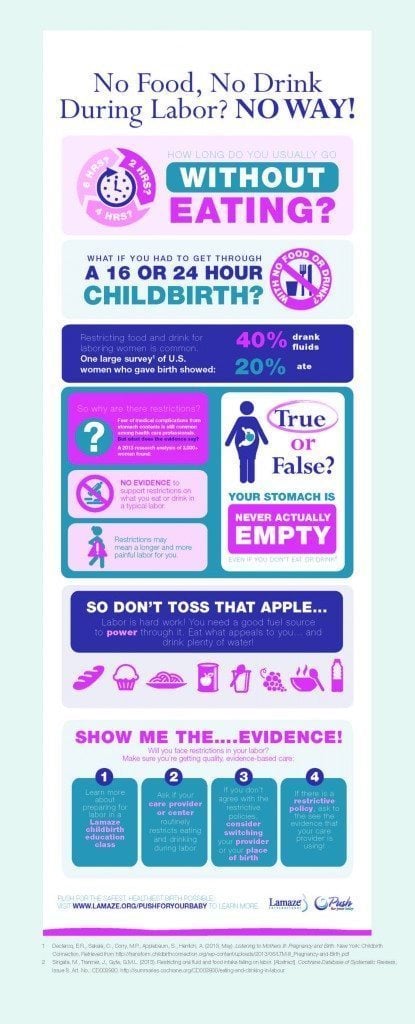
3. Use Comfort Techniques
Whether you want to have a natural birth or medicated birth, it’s good to know some comfort measures for labor. Why? Sometimes epidurals fade, and sometimes they don’t work (I’ve had a few clients whose epidurals didn’t take).15 Other pain medications dull the contractions but don’t take the pain away. Learning some pain management techniques to help you through labor can make the process easier and faster. Active labor is when things get intense, so this is a great time to use the relaxation techniques you learned in your childbirth education class(es).
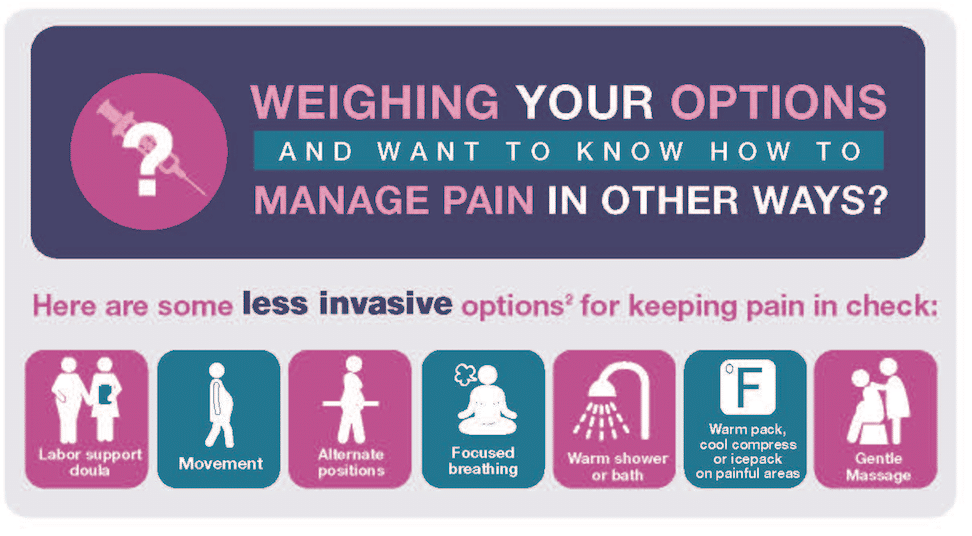
Here are some comfort techniques that can help you through active labor and transition:
- Breathing: Take big deep breaths (with your diaphragm) or do accelerated chest breathing (hee-hee, hee-hee blow).
- Positions: You can try walking, sitting on a birth ball, climbing the stairs, “slow dancing” with your partner while they rub your back, hands-and-knees, knees-to-chest, sitting up, leaning over, rocking in a rocking chair, lunging, squatting, and supported squat.
- Touch: Try massage, counter pressure (double hip squeeze or pressing your sacrum), and acupressure points.
- Hydrotherapy: Getting in the shower or a bath is fantastic. Again, you shouldn’t stay in the tub for more than one and a half hours at a time since it can slow labor. It’s best to get in the tub when you are in transition.18 But if you have been laboring for a while and need a break or want to submerge your belly underwater, you can have your support person or doula pour water over your abdomen during contractions.
- Visualization: Imagine being at the beach or in your favorite place. You could also visualize each contraction like a wave rising and falling or imagine your cervix opening and blooming like a flower. Our minds are powerful, so visualization can help.6
- Vocalization: Making noise can make you feel better too. Moaning, saying chants or mantras, or singing songs are helpful. If you find yourself making high-pitched cries, bring the tone down to deep belly sounds. This helps you breathe from your abdomen, allowing you to stay more centered and relieve some of the pain.19
- Heat and cold: A heating pad or cold pack on your lower back or belly is relieving and can help with the discomfort. A cold washcloth on your forehead is also very refreshing.
- Sensory distraction: Play music to create a fun or relaxing environment (see our birth playlist here), light candles (or electric candles if you are in the hospital), or look at a focal point to distract yourself and stay focused. Counting can also help and be a good ritual to get through each contraction. Aromatherapy can ease the pain, increase contractions, help with nausea, etc.20,21
- Hypnotherapy: If you take a childbirth hypnosis course (like Hypnobabies or Hypnobirthing), you can use those tools during your labor to relax.
4. Go to the Bathroom
Going to the bathroom at least once an hour is a good idea because it ensures your bladder is not blocking the baby’s descent. A full bladder can hold the baby’s head up. This causes you not to dilate as fast since the head is not putting the pressure on your cervix that it needs to dilate. So, you want to continue drinking your fluids and using the restroom every hour to keep the baby low.16,17
5. Get Ready To Go
Remember, don’t rush to head to the hospital or birth center. Active labor can take hours, so completing most of it at home is better to reduce your chances of unnecessary interventions.3 At the same time, don’t take too long because I don’t want you to have your baby in the car. Listen to your body and get ready to go when your body says it’s time. (4-1-1 or 3-1-1 — for more information, read when to go to the hospital for labor)
6. Have Good Continuous Support
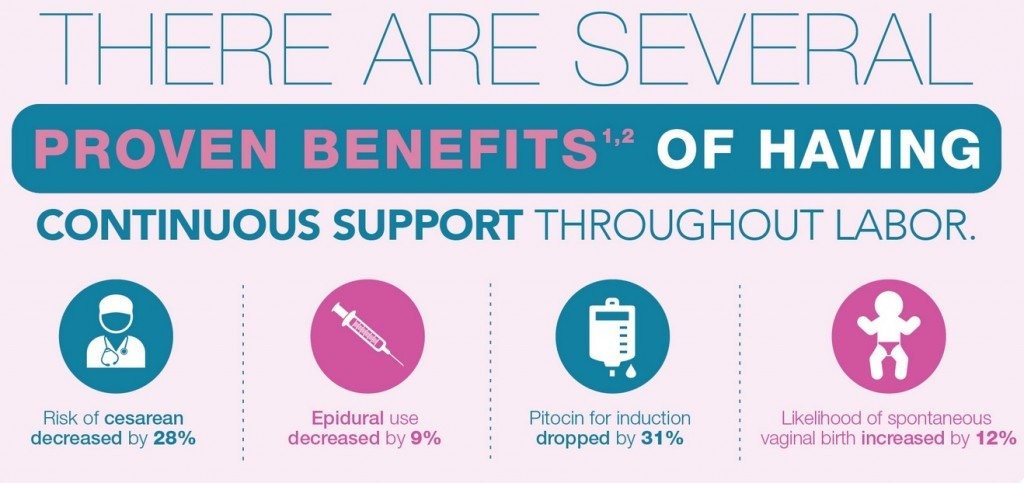
Labor is tough. That’s why they call it labor. Having positive, continuous support is vital during active labor. Women need it to be able to continue. Ensure you have people around you during active labor to support your choices, help you have a positive experience, and get you through to the next phase. Positivity and loving words can encourage you to keep going. Your support person can say, “You’re doing a great job. I’m so proud of you. You’re relaxing your body so well.”
If the people you plan on having with you during labor aren’t sure of the best ways to support you or know what options are available to you throughout labor, you may want to consider hiring a doula. You and your support person do not have to go through this alone.
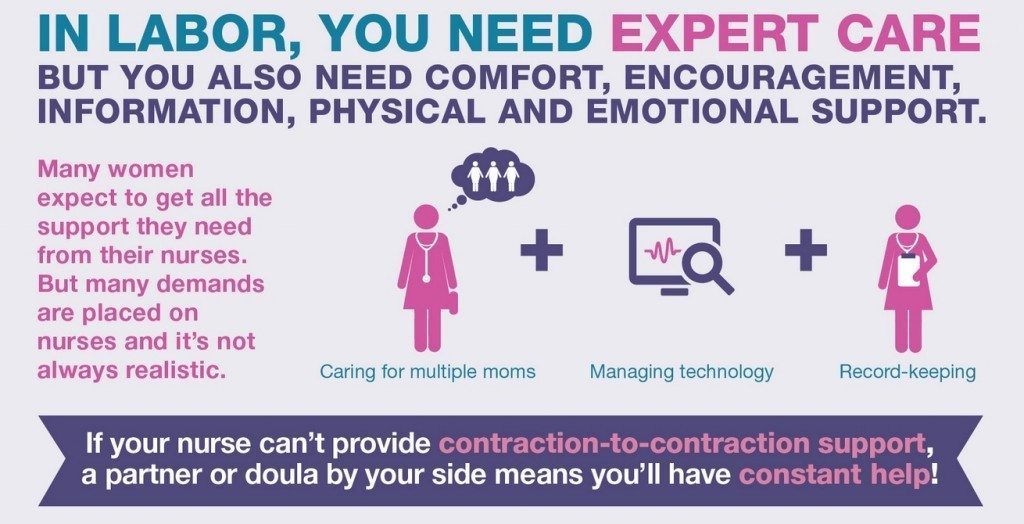
What was active labor like for you? Did you use any of these tips to help you through it? We want to know!
















